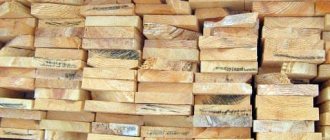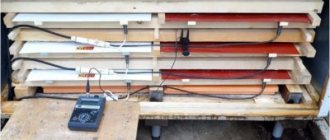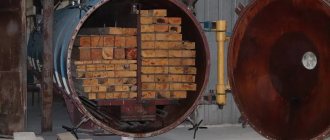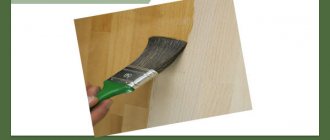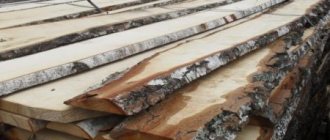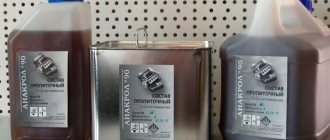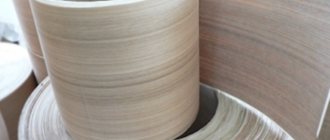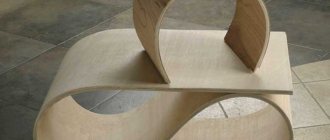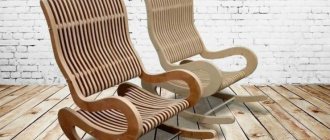Drying wood in an industrial microwave is an effective means of reducing moisture levels and preventing shrinkage and widening of gaps between wood members after construction. Compared to other drying methods, it is a more economical, fast and productive way of finishing wood processing. While air-dried wood will further dry out and shrink in dry rooms, this leads to undesirable consequences after building a house, bathhouse or gazebo. The microwave drying system works well for drying lumber such as profiled timber, clapboard, logs and other wood derivatives. Microwave drying reduced the preparation process from 10–20 days to 5–12 hours without warping or cracking, allowing the wood to dry evenly both outside and inside. At the same time, microwave oven can also sterilize wood, kill insects and fungi. in Kazan uses modern technologies for processing and preparing wood for the construction of houses according to its own designs.
Drying wood in the microwave
Author: Irina Zheleznyak |
Published: December 21, 2015 at 04:35 pm Drying wood in the microwave is one of the ways to dry wood at home, which has been tried by many experimentation enthusiasts. The difficulty of drying wood in a microwave oven is due to the fact that no information about the time, drying modes and characteristics of wood species, except for amateurs, can be found on the Internet.
Therefore, if you want to try drying wood in the microwave, you will have to go through trial and error, looking for your own, most optimal method. In our article you will find general recommendations on the technology of drying wood in a microwave oven.
Microwave
Unfortunately, microwave manufacturers did not look that far and did not write operating instructions on how and in what mode to dry this or that type of wood. And there is no “wood drying mode” button on any microwave.
Therefore, there is only amateur information obtained experimentally by masters of experiments. We will tell you general recommendations on drying technology. In general, finding the optimal method for drying wood in a microwave can only be achieved through trial and error.
Drying wood in the microwave: how it happens
Natural drying of wood is bad because it takes a lot of time. In addition, moisture evaporates mainly from the surface of the wood, which is often accompanied by cracking of the ends, deformation and other unpleasant surprises.
That is, wood craftsmen have two problems: how to dry the wood quickly, and how to “lure out” moisture from the middle of the block (burl, suvel...). And - most importantly - how to do it at home and cheaply. Some people suggest boiling the wood, and use this method successfully. And some resort to drying wood in a microwave oven.
So, when a material (wood) is in a microwave oven, the moisture contained in it intensively absorbs the energy of microwave (ultra high frequency) electromagnetic oscillations. In this case, heat is released, and the material itself begins to heat up from the inside. It turns out that the wettest areas of the wood heat up the most, therefore, the drying of the wettest areas will proceed most intensively, and over time the humidity will level out throughout the entire thickness of the material. Another positive thing about drying wood in the microwave is that the drier the wood becomes, the less the wood will heat up. In other words, the process is capable of self-regulation. As a result, the surface of the dried wood will not be covered with cracks.
Drying wood in the microwave: how to do it
A simple microwave will do. It is desirable that the plate-stand rotates and there is a “defrost” mode - approximately 300 W.
Drying wood in the microwave as a finished product is not recommended - as a rule, wood does not crack during the drying process. But no one is immune from cracking of the ends, and if you gape while the microwave oven is operating, the wood may smoke, char... Such troubles are unlikely, but for now you are just an experimenter - practice on something you don’t mind. As an option, give the wood the desired shape with an allowance of 10-15 cm, so that later you can remove the excess without regret.
Make sure that the selected block can easily enter and rotate in the microwave. In standard microwave ovens, the diameter of the table is 25 cm.
Drying wood in the microwave is possible for several bars at the same time. But at the same time, they should not lie on top of each other or touch - this will be an obstacle to the release of moisture.
Even when drying wood in a microwave oven, you will need a scale to record how much the weight of the wood changes. When the weight of the block stops changing, it means that the moisture has left, and further heating does not make sense.
So, how to dry wood using a microwave?
1) Take a piece of wood, weigh it, put it in the microwave oven, set the “defrost” mode. To begin with, it is better to take a short time - 1 minute. Over time, if you consider it necessary, the time can be increased to 2 or 3 minutes (the larger the diameter of the workpiece, the longer it is recommended to set the time). With a more intense mode, the workpiece may begin to smolder from the inside.
2) After 1 minute, remove the workpiece from the oven, wrap our semi-finished product in newspaper and a plastic bag with a hole. This must be done so that during strong evaporation, caused by heating of water molecules inside the wood, the wood does not crack. If you dry coniferous wood in the microwave, then it is better to put it wrapped in the block and into the oven: it is possible that the resin in the product will not boil (especially the resin pocket).
3) After the wood in the bag has cooled (about 20-30 minutes), take it out and see: the newspaper is wet, the bag is covered in droplets of condensation. So the process has begun.
4) We weigh the wood, dry it again in the microwave, and again wrap it in dry newspaper and a bag. And so on until, when weighing, we see a constant figure, or one that changes very little. During the last cycles of drying wood in the microwave, little moisture evaporates, so you can do without wraps. There can be any number of cycles - from two or three to twenty. It all depends on the initial moisture content of the wood, its species and your personal understanding of the concept of “dry wood” (if a moisture meter is not available). If the plate in your microwave does not turn around, turn the position of the workpiece 90 degrees with each cycle, so it will heat up evenly.
Actually, drying the wood in the microwave is finished.
Drying wood in the microwave: what we get as a result
After all the cycles of drying the wood in the microwave have been completed and the wood has cooled down, when you tap you can hear a characteristic ringing sound - the wood is dry. Another advantage of drying wood in the microwave is that it will not crack or warp over time. Drying wood this way with your own hands will give you material that is easy to process.
Thus, drying wood in the microwave is another way to quickly dry wood with your own hands at home. This method may seem tedious to some (weigh - wrap - cool - dry -..), but when the workpiece needs to be dried quickly and at home, then drying the wood in the microwave can help.
And now we bring to your attention a video about how wood is dried in a microwave at home.
Tatyana Kuzmenko, member of the editorial board of the online publication “AtmWood. Wood-Industrial Bulletin"
How useful was the information for you?
Process technology
It is better to dry the workpiece itself, and not the product, since deformation may occur during the drying process. You can make a rough cut of the material with a small allowance in relation to the size of the product that you will make from it. Ideally, it is still better to dry the entire workpiece.
So, let's get to work:
Drying wood in a microwave ovenWe weigh the workpiece and record the weight.
- Take a plastic bag and poke holes in it. Wrap the workpiece in newspaper and put it in a plastic bag.
- Place the bag with the workpiece in the center of the oven and turn on the oven. Important - check that the operating mode is minimum power.
- We set the time according to the size of the workpiece. Approximately 1 minute for pieces smaller than 20 cm, 2 minutes for pieces 20-30 cm and 3 minutes for larger sizes.
- Remove from the oven, but leave in the bag. Let cool for 30-40 minutes.
- We weigh the workpiece and repeat the drying operation.
- We continue the cycle of “weighing – drying – cooling” several times.
When the weight no longer decreases, you can stop. The workpiece is dried.
Drying wood in the microwave (microwave ovens)
Wood can be dried in a microwave oven! We will tell you about the technique of such drying.
Many turners and carvers have difficulty finding material. The choice of thickness of boards on sale is small and, as a rule, limited to 50 mm, and for sculptural carving or turning thicker parts are needed.
Raw wood is more accessible, at least this applies to species growing in central Russia. And although it is almost impossible to find birch burls on sale, you can get them yourself.
In any case, the problem of drying the wood arises, because the natural process takes months...
NATURAL DRYING
Natural drying of the workpiece before processing or the finished craft after processing is not an option. Firstly, there is a risk of cracking. And secondly, there is a loss of time - months. The expediency of such drying is debatable, because interest in the craft “cools off.” And if it is made to order, then delay is generally unacceptable!
The long natural drying time is partly due to the fact that water evaporates only from the surface. Heating with conventional heat sources is of little use here - the thermal conductivity of wood is low, the outer layers dry out faster and shrink, and eventually cracking is inevitable...
MICROWAVE DRYING
Nowadays, there is a very banal solution that ensures heating of wood throughout its entire thickness, and the greatest heating will occur exactly where it is required - on the damper parts. We are talking about drying using microwave radiation.
By the way, in the West, drying wooden crafts in the microwave is already quite common. Of course, this is only possible if the size of the workpiece or finished work is less than 25 cm - approximately the diameter of the chamber of most ovens with a rotating table. There are stoves with a 35 cm table on sale, but they are significantly more expensive.
The difference between microwave drying and natural drying is that it does not create microscopic cracks in the wood, which can destroy 50 to 150 mm of wood from each end, or even break the entire piece into pieces. In addition, changes that occur in lignin fibers under the influence of microwave heating lead to the fact that the dried object subsequently becomes less sensitive to changes in humidity. The reason is that microwaves are absorbed by water molecules in the wood structure and heating occurs evenly.
SELECTING A MICROWAVE
A cheap and low-power microwave with a rotating table, without unnecessary electronic bells and whistles, is best suited. It is important that the stove has the ability to set the minimum power. For models without digital display, this function corresponds to the “defrost”, “defrost”, etc. mode.
In addition, you need to pay attention to the dimensions of the chamber and door so that the crafts fit into the oven. When purchasing, be sure to keep in mind that the depth of the chamber is often less than its width.
You will also need scales with scale divisions of 5 g or so. Household ones with an arrow are quite suitable, but digital ones with an indicator are, of course, more convenient.
MICROWAVE DRYING TECHNIQUE
I’ll say right away that we will be looking at relatively large items. It is better to dry some pieces like burls entirely or by sawing them into pieces with some allowance (if you know exactly what you will make from these pieces).
But you can do it differently - pre-process the workpiece. If we are talking about a turning craft, then you need to turn the object with an allowance of 10% of the diameter, but not less than 5 mm. If you are talking about wood carving, then cut it out rough with an allowance of a few millimeters as well.
Remember that when drying, an object turned from wood may become deformed, for example, a round object may become oval. By working with the wood of your choice, you will quickly learn how much it deforms when dried and reduce the allowance. Keep in mind that wood can easily burst if you leave a raw, processed piece just on the table. Therefore, when taking breaks in carving or before microwave drying, store the craft in a plastic bag.
Immediately before processing, weigh the product and record its weight. Wrap the craft in a plastic bag and poke holes in it. Place it in the middle of the oven and turn on the power mode to approximately 300 W (defrost mode). The drying time depends on the size of the product, Western authors advise this: for a turned object with a diameter of up to 200 mm - 1 minute, 200–300 mm - 2 minutes, more than 300 mm - 3 minutes.
How to properly dry wood in a microwave oven?
Some tips:
- It is worth drying either the workpiece (rough rough) or an unfinished craft that can be modified (remember that it may become deformed during the drying process);
- Do not remove the workpiece from the bag immediately after drying, follow the technology;
- If water appears in the bag after a cycle, it must be removed and the newspaper replaced;
- If you intend to engage in drying in a microwave oven constantly, then you can only work out the optimal cycle experimentally; write down all the modes and sizes of the workpieces;
- For resinous woods, be sure to use a newspaper into which the resin will drain (change it each time);
- Start with inexpensive materials, with them you will learn to withstand the technology, the workpieces will dry and not char or crack.
Microwave drying of wood
Drying wood in an industrial microwave is an effective means of reducing moisture levels and preventing shrinkage and widening of gaps between wood members after construction. Compared to other drying methods, it is a more economical, fast and productive way of finishing wood processing. While air-dried wood will further dry out and shrink in dry rooms, this leads to undesirable consequences after building a house, bathhouse or gazebo. The microwave drying system works well for drying lumber such as profiled timber, clapboard, logs and other wood derivatives. Microwave drying reduced the preparation process from 10–20 days to 5–12 hours without warping or cracking, allowing the wood to dry evenly both outside and inside. At the same time, microwave oven can also sterilize wood, kill insects and fungi. in Kazan uses modern technologies for processing and preparing wood for the construction of houses according to its own designs.
Technology
There are various methods for drying wood. For example, convection drying in special drying chambers, which transfers heat to the surface of the material through air circulation. Despite its simplicity, this technology is quite energy-intensive, since the equipment uses a large amount of electricity to achieve the required temperature. Unlike convection drying, thermal processing using microwave dryers has a different principle that provides it with significant advantages.
The technology of volumetric heating of wood using microwave radiation in combination with a vacuum ensures uniform drying of wood fibers, preventing the lumber from drying out on the outside and remaining moist on the inside. Microwave energy evenly heats the deep structures of the wood, which does not close the membranes of the bordered pores of the wood. The pores remain open until the end of drying, which contributes to the most effective drying of the material both outside and inside. The secret of the technology is that the energy from microwaves is transferred to the water contained in the wood structure. Thanks to this principle, tensile stresses, cracks and warping do not occur on the surface of the wood.
A unique wood drying technology that has no analogues in the world.
The only technology that can soften wood, make wood plastic, relieve all stress and return wood to its original strength.
In its normal state, wood has elasticity, significant spatial rigidity and resistance to compression. Wood receives these valuable properties from lignin, a natural “network” polymer that gives wood a stable shape and strength. Lignin is located in the intercellular space and in cell walls, connecting cellulose fibers. Coniferous wood contains about 23-38 percent of it, and deciduous wood contains up to 25 percent. Essentially, lignin is a kind of glue.
By microwave steaming, lignin softens and turns into a “colloidal solution.” After lignin softens, the wood becomes plastic and all stress is relieved. This method is used in the production of furniture by bending. As it cools, the softened lignin hardens and the wood regains its original strength. Practice shows that the optimal temperature for softening solid wood is 1000C. This temperature must be obtained not on the surface, but inside the material, which allows microwave heating.
The uniqueness of microwave vacuum drying of wood lies in the fact that volumetric microwave heating allows you to first shrink the core of a log or beam, and then the outer layers. Therefore, internal stresses do not form in the wood, leading to the formation of cracks and warping.
Ultra-high frequency electromagnetic waves heat the water in the wood, not the wood. Microwave energy from the magnetron is supplied by waveguide paths and is evenly distributed throughout the entire volume of wood using waveguide-slot antennas using the scanning method. During microwave drying, the wood is in a steamed state from the beginning to the end of drying.
Quality
dried wood is provided by selective volumetric heating. More heat will be released in a larger area of humidity. As the wood dries, it becomes transparent to microwave waves. As humidity decreases, microwave energy losses for heating decrease, and heating continues only in those areas of the processed material where high humidity still remains. Heating of dried areas automatically stops. Selective heating prevents the formation of large moisture gradients that lead to cracks and warping.
High
drying
is ensured by removing moisture from the wood along the least path of resistance. The moisture permeability of wood along the grain is several thousand times higher than across the grain. For example, for pine it is 5230 times, for birch it is 16000 times, for oak it is 1100 times. Excessive pressure created inside the wood and a vacuum outside the wood allows moisture to be quickly removed. The vibrational motion of water molecules at a rate of 915 million times per second significantly reduces friction between wood and moisture.
Economical
is ensured by removing free moisture from wood in a liquid state, bypassing vaporization.
High performance.
A microwave - vacuum dryer with a loading volume of 16 m3 allows you to dry up to 350-450 m3 of timber and logs in a month.
Compactness.
Installation and operation of microwave vacuum dryers requires tens of times less area than conventional convective dryers with similar performance. There is no need to maintain storage areas for stacks before and after drying. Dryers require only three-phase electricity to operate.
Versatility.
In microwave vacuum dryers you can dry timber, logs, carriages, power line poles, lumber, and slabs. Timber dried in a microwave vacuum dryer is not inferior in quality to laminated veneer lumber, but the price is 2 times cheaper. The output of microwave beams from logs is 2 times greater than that of laminated veneer lumber.
We have been engaged in microwave drying of wood since 1992 and to date have achieved the following results:
Drying rounded logs and timber from a humidity of 80% to a humidity of 12% in one day. Electricity consumption for drying 180 kWh/m3
Drying cedar beams (microwave beams) with dimensions 350x350mm from humidity 70% to humidity 12% in 48 hours. Electricity consumption 200 kWh/m3
Drying oak logs with a diameter of 70 cm from humidity 90% to humidity 12% in 6 days.
Drying short-length birch blanks from 90% humidity to 8% humidity in 30 minutes.
Guest house made of dry cedar gun carriage. Carriage humidity 12%.
Features of microwave drying
Microwave drying of wood is suitable for any lumber with an initial moisture level of no more than 25%. After drying in special microwave chambers, the moisture content of the product is about 8%. Thanks to this technology, high-quality blanks are obtained for the manufacture of furniture, flooring materials, wall coverings and other tasks. Chamber microwave drying provides effective solutions to eliminate insects, mold and other problems, as well as prevent cracks, warping, unevenly dried areas of wood and others. The entire microwave drying process takes less than 20 minutes, which significantly speeds up the process.
Advantages of microwave drying of wood
- High speed and productivity - the time required for high-quality drying of wood depends on the power of the microwave unit. For example, a 60 kW installation requires 10-26 minutes to reduce the moisture level from 35-40% to 20% in 8-50 mm thick lumber.
- High quality - whereas during the traditional drying process the wood warps or cracks due to the uneven shrinkage of dehydrated fibers. An industrial microwave oven, on the other hand, uses selective heating. The finished material retains its original shape and color due to maintaining the permissible limits of internal pressure in the wood fibers.
- Quick Disinfection – A special industrial oven uses microwaves to kill woodworm eggs and larvae. Thanks to wave radiation at a frequency of 2450 MHz, the tree heats up to 70-80 ℃, you can kill all pests in 3 minutes.
- Uniform drying - the process of processing wood in an industrial microwave oven is characterized by high permeability and selectivity, it allows you to equalize the content in the surface and deep layers of the material, which in turn minimizes the risk of cracks and deformation.
- Subsequent resistance to waterlogging and wood decay - microwaves promote the crystallization of resin in wood, as a result of which resinous substances create a protective layer inside the pores of the wood, serving as a natural barrier to external moisture and biological destroyers.
Do you want to learn more about the lumber and technologies used, or would you like to use the services of specialists in private residential construction? Leave a request for a call back or contact us yourself by phone or email!
Microwave vacuum drying
Author of the technology - https://molles.su/
The processes of drying logs using convective and microwave methods are shown schematically in Fig. 1 and 2. Conventionally, we divide the log into two zones - central and external. When convective drying of logs, the surface layers of the log dry first. The central zones remain swollen. This leads to stretching of the surface layers around the swollen central zone and the formation of cracks on the surface of the log (see Fig. 1.).
With the microwave method of drying logs, the central zone dries first. The dry central zone attracts the outer zones. The outer zones begin to shrink, preventing the formation of cracks (see Fig. 2.). The logs dry without cracks.
Any wood drying process occurs in the following sequence: • heat supply and movement of moisture from the inner layers of wood to the outer ones, • evaporation of moisture from the surface of the wood • and removal of evaporated moisture from the chamber.
For high-quality drying, it is necessary that both processes (the movement of moisture from the inner layers of wood to the outer and the evaporation of moisture from the surface of the wood) occur in conjunction and in a balanced manner. Moisture from the inner, core layers must move to the surface of the wood and evaporate from it. In this case, it is necessary that the amount of moisture evaporated from the surface is equal to the amount of moisture transferred to the surface layers of the wood. If the amount of water evaporating from the surface is greater than the amount of water transferred from the inner layers, then drying out of the surface layers of wood will occur. As a result, tension will arise between the inner and outer layers. Moreover, the greater the difference in humidity between the core of the wood and its surface, the greater it will be. Stresses lead to deformations in the wood structure and to cracks and destruction. Thus, if moisture exchange is equal to moisture transfer, then drying will take place without stress and deformation.
The main advantage of drying wood under conditions of low pressure in the chamber is an increase in the diffusion coefficient of water vapor and the rate of moisture movement in the wood, this leads to a reduction in drying time and improves its quality. However, when vacuuming from the surface of the lumber, moisture evaporates completely, therefore, the wood dries out and stresses are created in it, leading to the appearance of cracks. Thus, with the vacuum drying method, the main requirement for high-quality drying is violated - there is no balance of evaporated moisture and moisture transferred to the surface layers of wood.
The advantages of vacuum chambers can be fully realized through the use of microwave energy. During microwave drying, active dehydration of wood occurs as a result of the influence of electromagnetic radiation on free bound moisture. This phenomenon makes wood drying several times more efficient and significantly reduces energy consumption, since there is no need to heat the wood structure and the surrounding air (coolant), and most of the energy is absorbed directly by the moisture inside the wood. The heat released is spent on heating raw wood to the boiling point of water and evaporating moisture. Since the moisture inside the wood is in a confined space, when the water begins to boil, the excess pressure inside the wood increases. During microwave drying of wood, it is the excess pressure that drives moisture from the inner layers to the surface of the wood. And most importantly, the two main gradients - pressure and temperature - are constantly directed from the center of the wood to its surface. And the moisture gradient throughout the entire volume of wood is close to zero, which prevents the formation of tension in the wood during the drying process. The use of microwaves for drying wood has shown a real and tangible acceleration of the drying process and an improvement in the quality of dried lumber.
Stages of the microwave vacuum drying process: 1. Heat supply. The energy generated by the magnetron of the drying chamber is completely, without loss, and almost instantly delivered to the water that is in the wood, namely to the water, and not to the wood. Microwave energy heats up the water, not the wood. If you place absolutely dry lumber in a microwave chamber, it will not heat up. Dry wood is transparent to electromagnetic waves. Thermal energy is released only in water. The moisture in the wood heats up and boils. Hot steam creates excess pressure and begins to squeeze moisture outward - to the surface. The temperature inside the wood can rise to 120 °C, which corresponds to an excess pressure of 1 atm. Microcracks in wood begin to form when the pressure inside exceeds 3 atm. The magnetron power is selected in such a way that the pressure inside the wood does not rise above 1 atm.
2. Moisture transfer from the inner layers of wood to the outer ones. At the initial stage of drying, free moisture is squeezed out through the capillaries of the wood in the liquid phase. After the capillaries and pores are freed from free moisture, the movement of the steam-air mixture begins in them. When moisture moves through the capillaries, due to the constant supersaturation of steam, forced partial condensation of steam occurs inside the capillaries, which leads to the return of heat to the wood. As you know, evaporation always absorbs thermal energy. In our process, moisture does not evaporate from the surface of the wood, but is carried by the steam-air mixture (due to excess pressure) into the free space of the chamber, so the wood is not cooled. After leaving the wood, the drops fall down to the floor of the chamber, and the vapor moves to its walls due to diffusion. The temperature of the steam coming out of the wood is about 100 °C. Hot steam creates a thermal curtain that prevents the wood from cooling. During the drying process, wood is constantly in a steamed state, and the capillaries on the surface of the wood are always open.
3. Removing steam from the chamber. Steam, due to natural diffusion, moves to the walls of the chamber and, in contact with them, condenses, giving off heat to them. They heat up to 70−80 °C. Due to the large temperature difference between the steam in the chamber and the surrounding air, there is no need to forcefully cool the enclosure around the chamber. The heat exchange process between the chamber enclosure and the outside air occurs due to natural convection. The heated enclosure serves as a powerful heat insulator and reflector of thermal energy, which is directed back into the chamber. The operation of chambers that combine the advantages of vacuum and microwave drying has shown that they provide the shortest drying time for large-section timber with high quality, i.e., with an almost complete absence of defects.
Before drying, the logs undergo rounding, during which the upper and lower compensation grooves are milled, but the moon and crown grooves are not selected. In this case, the complete absence of cracks is guaranteed. Dried beams or rounded logs do not require a long break in the construction of houses for shrinkage of walls and provide an excellent appearance of the house, not inferior to the appearance of houses made of more expensive laminated veneer lumber.
DIY microwave drying chamber for wood
Today there are many known methods for drying lumber, each with advantages and disadvantages. As an example, do-it-yourself microwave drying of wood. The technology is no longer new and quite productive. Microwave chambers are used for drying hardwood, large-section lumber, veneer, timber, and logs. Basically, after drying, the material is used in house construction for the construction of walls. With its high-quality implementation, after quick drying, the lumber acquires the necessary strength and external characteristics, but if it is imperfect, then the percentage of defects is quite high.
In practice, even among manufacturers with extensive experience in practical developments, the technology is partly crude and has shortcomings. Especially when it comes to homemade microwave dryers. It is important to produce a sufficiently powerful magnetron and ensure control of all wood parameters. If this is not done, the material underneath will become unusable after heating with microwaves. It will be very difficult to make something from it, and it will also have a reduced service life.
A wooden house without long-term shrinkage is a reality!
A house made of wood is associated with coziness, comfort and harmony with nature. Having decided to build your own home, you want to bring the joyful moment of housewarming as close as possible, and not wait for years for the shrinkage! Experts talk about the features of using profiled timber for chamber microwave drying.
Building a house from dry profiled timber that is chamber microwave dried is the fastest way to move into a wooden house.
About houses made of microwave-drying timber
- Does not give long-term shrinkage. You can move into a house made of dry timber immediately after completion of construction and finishing work.
- 100% solid wood. Dry timber does not contain phenols or adhesives, even the safest ones.
- Complete disinfestation. The microwave chamber destroys all pathogenic microorganisms (mold, fungus), as well as the bark beetle and its larvae.
- Minimizing the formation of cracks and deformations in microwave drying mode. Among other things, during the drying process, the deformed timber is immediately rejected.
- Ease of installation. During the process of microwave drying, wood significantly loses weight due to the release of moisture; therefore, installing a house kit from dry timber will take less time and effort.
- Thermal insulation. The thermal conductivity of dry timber 150x200 mm is equal to approximately a 500 mm brick wall; Needless to say, such a house does not need additional insulation.
About "Molles"
— production of a full cycle of house kits from dry profiled timber of chamber microwave drying, starting from logging, drying, profiling, facility design, production and installation of the house kit.
For the production of profiled timber, timber is supplied from the northern regions of Russia: Kostroma and Arkhangelsk regions.
Most of the products are made from timber 150x150 mm and 150x200 mm.
For more than 10 years, Molles has been specializing in the production of house kits from dry corrugated timber and microwave-drying logs.
About the cost of a house made of microwave-drying timber
On our website you can select ready-made house kits of various sizes and configurations.
One of the projects
- Dimensions 12x14 m
- Area: 168 sq. m
- Beam cross-section: 150×200 mm
This spacious house was built in the north-west of the Moscow region for a young friendly family.
This is what the object looks like during installation
Price of the house kit: 2,215,000 rubles.
The package includes:
- dry corrugated timber microwave drying 150x200;
- interventional insulation (jute);
- fastening elements (dowel, knot-force);
- floor beams 100×200;
- hemming board 25x150;
- rafters;
- sheathing;
- counter lathing;
- casing boxes.
Price “for finishing”: 4,100,000 rubles.
- dry corrugated timber for microwave drying;
- interventional insulation (jute);
- fastening elements (dowel, knot-force);
- floor beams 100×200;
- hemming board 25x150;
- insulation 200;
- rafters;
- sheathing;
- counter lathing;
- metal roofing;
- insulation 200 mm;
- waterproofing;
- vapor barrier film;
- components, fittings;
- casing boxes;
- PVC profile with double glazing;
- entrance metal door;
- assembly.
Details can be found on the project page.
About design
If a suitable project is not found in the catalog, Molles specialists are ready to complete a project of any complexity, taking into account the wishes and requirements of the customer.
If you already have your own project containing the “Specification of wall elements” section, send it to us to prepare an estimate.
If there is no project, but you have an understanding of what you would like to get in the end, send data (pictures, links to projects, sketches) to prepare a preliminary calculation.
About deadlines
Three months is the average time from the customer contacting Molles to the delivery of the project.
- It usually takes a week to develop and approve the project.
- A month to produce a house kit.
- A month for installation.
- Next is finishing.
About the production of house kits from chamber microwave-drying timber
The Molles production base is located in Solnechnogorsk on Ukhova Street (industrial zone). On the territory there are production workshops, a warehouse, and administrative premises. There is also a wood drying shop with a microwave chamber.
Molles does not have exhibition areas, sales departments or offices in Moscow. The company believes that reasonable prices for quality products are more important than anything else. But Molles is always ready to show projects under construction. In the vicinity of Zelenograd, two houses are currently being prepared for delivery - it’s time to look at them.
Come, “Molles” will show and tell you everything!
Video of the company from the construction site
Production process video
More photos on social networks VKontakte, Facebook, Instagram and videos on YouTube.
As an advertisement. Information provided by the advertiser.
